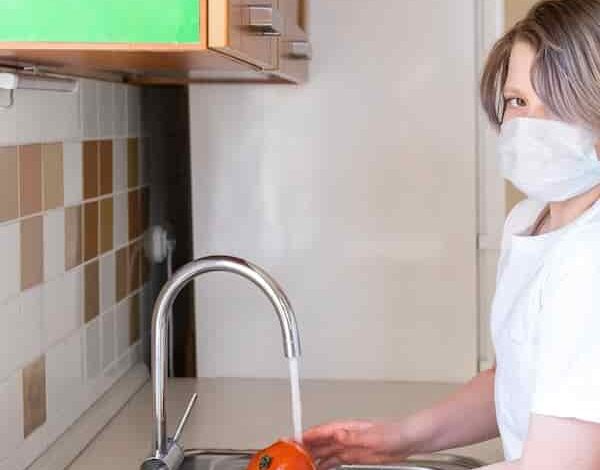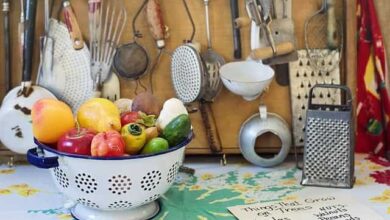EXPLORING THE SCIENCE OF 5 FOOD SAFETY MEASURES:THE TASTE OF TRUST
Food Safety

INTRODUCTION
Food Safety remains as a fundamental cornerstones of present day societies. Every year 7th of June is celebrated as World Food Safety Day. According to World Health Organization on average about 1600000 people gets suffered everyday due to food safety issues, about 340 under 5 years children die every day owing to easily preventable unsafe food contaminations and around 200 diseases may results from diarrhea to cancer due to unsafe foods. Furthermore, 1 out of 10 people around the world affected by food borne diseases which could easily be preventable through food safety measures and protocols.

The food safety situation is also alarming. According to survey it is revealed that around 10.5 million (29 percent) population is facing food insecurity. Around 2.1 percent population is in emergency food safety condition and 8.4 percent population is in crisis condition in connection with food safety. Ironically, it’s a data of just 43 rural districts of Pakistan in only 3 provinces and includes only 37 million people which are just 16 percent of Pakistan population.
In a world set apart by globalization, unpredictable stock chains, and different culinary inclinations, keeping up with elevated expectations of food safety has turned into a goal. Food safety entails all the procedures required to ensure food quality and safe consumption in order to avoid diseases and malnutrition. The insight shared in this article will not only covers the household kitchen’s safe and healthy practices but also pore light on the food safety measures should be employed in kitchens of hotels and restaurants.
HOW FOOD SAFETY COULD BE ENSURED?
The Importance of Food Safety
How Health and Hygiene play a key role in a kitchen.
Temperature Control
Cross Contamination
Cleaning and Sanitizing
IMPORTANCE OF FOOD SAFETY
Without proper food handling practices, the public becomes at risk for food borne illness or injury from hazards in the foods they consume.
Anyone who has had “food poisoning” or a food borne illness or injury knows that it is an unpleasant experience. But, with estimates that about 48 million people get sick, with 128,000 hospitalized, and over 3,000 deaths annually from unsafe food nationwide in America.
A mismanaged kitchen means there’s miscommunication, you are unorganized, and there is a lack of effort being put forth. Cleanliness is a key to any kitchen. A dirty, disorganized kitchen is less likely to be following good food safety practices.
In absence of a competent and knowledgeable person in kitchen it makes my life very difficult in ensuring food safety.
In order to understand food safety acronym YOPI must be comprehended.
- Y represents children less than 5 years of age
- O represents older age group from 65 years to further old
- P for pregnant women.
- I stand for those that are “Immune Compromised’, meaning having a serious illness like cancer, HIV, diabetes or other conditions, as well as those prescribed certain medications.
HEALTH AND HYGIENE
In this section we will highlight on certain questions like what is biological contamination and how does food worker health affect safety? What should you do when you’re sick? And what does good personal hygiene means find the answers to these and other important food safety questions including proper hand-washing and when it’s important how to avoid bare hand contact with ready-To-eat foods, glove use and how personal habits can affect food safety.
BIOLOGICAL CONTAMINATIONS
All the types of hazards that can arise from unsafe food handling practices Biological contamination is the most common germs are everywhere? It’s those harmful Pathogens that cause food borne illness.
Food handlers health is extremely important and its recommended that if food handler is not feeling well, he or she should avoid tasks related to food handling. Germs can easily be spread if you’re experiencing flu-like symptoms jaundice or other illness. If, You’re sick stay home.
24 Hours Rule must be employed in case of vomiting, fever and diarrhea. It means to avoid food related tasks for 24 hours after onset of symptoms.
It’s important to report these symptoms as well as if you have an open wound or sore. If employees are sick manager must tell them to go home and come back when they feel better.
GOOD PERSONAL HYGIENE SAVES LIVES
Being aware of your personal hygiene is another aspect of avoiding contaminants in the food you serve. In fact food workers and household kitchen keepers with good personal hygiene save lives through
- Following proper hand-washing protocol, by washing hands the right way and at the right times. keeping fingernails trimmed for easier cleaning
- Wearing hair restraints
- Proper work clothing and
- Covering through bandages
- Addition to not working while sick these are all ways that hygiene prevents the spread of germs in the kitchen
HAND WASHING
Hand-washing is something we all learned at a very young age. But, if you want to work as a food handle, It’s important to relearn this task in the proper way that complies with the health Department guidelines.
SOURCES OF CONTAMINATIONS
Contamination can be caused by:
- Using the bathroom
- Touching one’s face or nose
- Handling raw meat fish or poultry
- Sneezing, coughing or blowing one’s nose
- Handling garbage or dirty dishes
- Handling animals
WHEN IN DOUBT…..WASHỊ
If you aren’t sure a wash is necessary, wash anyway, just to be safe.
Proper hand washing is a six step process that requires a hand-washing sink with hot or cold running water, soap and paper, towels or other single-use drying method.
Step one: wash hands with plain water first
Step two: apply Soap and scrub remember to pay attention to your entire hand when washing
Step three: Scrub your hands together for 10 to 15 seconds
Step 4: Wash spaces between fingers and also back side of hands.
Step 5: Rinse hands to send the soap suds and germs down the drain rinse for about five seconds to fully remove the soap
Step 6: after rinsing dry hands and forearms using either a disposable paper, towel or hairdryer.
It’s important to know that hand sanitizers may be helpful on clean hands, but are not substitutes for hand-washing, in fact in some cases double hand-washing may be required.
Always remember that hand-washing is the most important food safety tool to get rid of the germs that make people ill. That’s why it’s important to prevent bare hand contact with ready-To-eat food by using utensils such as tongs, scoops, Deli papers, or single-use gloves.
Focus on minimizing bare hand contact. Utensils, tongs, tissue paper these are all acceptable when handling ready-To-eat foods.
So you don’t need to glove up as often as you think?
When you do use gloves remember it is required to wash your hands before and sometimes after proper glove use.
Ready-To-eat foods are those served without additional washing or to remove germs. They include washed produce that’s eaten raw such as sliced fruit salads and garnishes.
Gloves can be tricky because if a food handler thinks. They’re using gloves correctly and they aren’t they can put the public at an increased risk by contamination. Gloves are there to protect food from germs not your hands from food.
HAIR RESTRAINTS
Use hair restraints that are intended to keep hands out of here and hair out of food. Carry strengths include hair nets, barrettes ponytail holders and tight braids. Long beers must also be restrained.
Fingernails must be trimmed for easier cleaning; if nail polish or artificial nails are worn you must wear gloves when preparing all foods not just ready-To-eat foods.
Rings, watches, bracelets and all other jewelry in arms or hands must be removed during food preparation.
Wedding rings may be worn if they’re covered with the glove when the food worker is preparing food.
Personal items length medicine coats and persons must be stored away from food dishes and lids.
TEMPERATURE CONTROL
This section will explain temperature control including the danger, Zone hot and cold, holding proper cooking temperatures, and cooling food.
Foods must be cooked and held at correct temperatures and cooks must use a metal stem or digital thermometer to ensure that meat, poultry and Seafood and other cooked foods reach safe minimum internal temperatures.
Remember always hold cold foods at 41 degrees Fahrenheit or less and always hold hot foods at 135 degrees Fahrenheit or above.
Danger Zone in which Bacteria can grow rapidly is between 41 degrees Fahrenheit and135 degrees Fahrenheit, potentially hazardous foods may not be at room temperature for more than four hours.
Well, being clear when you’re working with food, it’s a key to work quickly in small batches. Keep the rest of the food you’re not working with hot or cold either below 41 degrees if it’s cold or above 135 degrees if it’s hot food.
To ensure temperature safety steam tables, super warmers and other hot holding units must be turned on and heat it up before hot food is put into them. Don’t use food placed on room temperatures.
Cold foods should be heated up to 165 degree Fahrenheit for 15 seconds only.
To monitor temperature thermometers can be used. When practicing cold holding always be mindful of the danger zone and keep cold foods at 41 degrees Fahrenheit or colder.
PREVENTING CROSS CONTAMINATION
You will learn what causes cross contamination, so you how to avoid this potentially dangerous problem. Avoiding cross contamination is one of the most important keys in a kitchen. It’s critical to avoid cross contamination, always keep raw meats like chicken, away from ready to eat foods like vegetables.
The bacteria could be spread through meat to other available foods. This process is called as cross contamination. This happens when blood or juice from raw chicken or other meat gets onto a counter, cutting board, utensils, or hands. The bacteria present can spread to other food.
It is recommended to place raw meat away from other food items. It is more convenient and healthy to clean the meat cutting or exposure surfaces. Furthermore, it is also recommended to use separate cutting boards for foods and vegetables and meat items. Cross contamination also occurs due to storages.
CLEANING AND SANITIZING
Some crucial points in this segment include:
- The difference between cleaning and sanitizing, and why it’s important.
- Washing dishes by hand and using a commercial dishwasher.
Cleaning and sanitizing are not the same. Cleaning uses soap and water to remove dirt and food from surfaces while sanitizing uses chemical or heat to kill germs.
Food contact surfaces should be washed, rinsed, and sanitized after each use to remove germs that can cause illness. Chemical sanitizers must be mixed following the label’s directions and soap should never be added to sanitizers. Store wiping cloths in clean sanitizer.
Do not stack dishes on top of each other, as this will not allow water to circulate properly. To keep them from filling with water and dirt, glasses, cups, and bowls should be upside down in the dishwasher.
Plates and flatware should be stood up edgewise. Dishes should be allowed to air dry for 1-2 minutes before removing from racks.
After dishes are clean and dry, handle and store them safely to minimize possible contamination. Never touch part of a dish that a guest’s mouth might touch. Cups, bowls, pots, pans, etc. must be stored upside down. It is recommended to place utensils up from 6 inches of floor.
CONCLUSIONS
Food safety is vital to avoid food contaminations which may results in serious food borne illnesses. Food safety measures including personal hygiene, sanitations, hand washing and temperature controls while cooking are extremely essential to keep high standards of quality foods. One must ensure wearing gloves and hair covers during cooking irrespective of kitchen working in homes or restaurants. Finally, food safety measures must be incorporated at every level to get rid of pathogen and contaminations attacks which deteriorates health and well being.
What is food safety?
Food safety entails all the procedures required to ensure food quality and safe consumption.
How food safety could be ensured?
The Importance of Food Safety
How Health and Hygiene play a key role in a kitchen.
Temperature Control
Cross Contamination
Cleaning and Sanitizing
What is YOPI?
· Y represents children less than 5 years of age
· O represents older age group from 65 years to further old
· P for pregnant women.
· I stand for those that are “Immune Compromised’, meaning having a serious illness like cancer, HIV, diabetes or other conditions, as well as those prescribed certain medications.
What is biological contamination?
All the types of hazards that can arise from unsafe food handling practices Biological contamination is the most common germs are everywhere? It’s those harmful Pathogens that cause food borne illness.
What are sources of food contaminations?
Contamination can be caused by:
· Using the bathroom
· Touching one’s face or nose
· Handling raw meat fish or poultry
· Sneezing, coughing or blowing one’s nose
· Handling garbage or dirty dishes
· Handling animals
What are safe temperatures for food safety?
Remember always hold cold foods at 41 degrees Fahrenheit or less and always hold hot foods at 135 degrees Fahrenheit or above.






